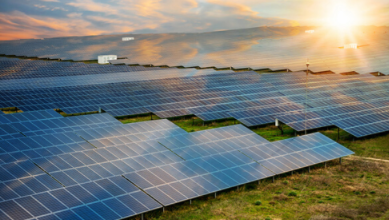The "Renewable Energy Installed Capacity Statistics Report" released by the International Renewable Energy Agency (IRENA) in March 2025 shows that the global solar photovoltaic installed capacity will increase by 451.9 GW in 2024, a year-on-year increase of 32.2%, and the total installed capacity will reach 1865 GW. This scale is equivalent to the annual electricity demand of 180 million households worldwide, and can reduce carbon dioxide emissions by more than 1 billion tons annually, becoming the core force in global efforts to address climate change.
1、 Photovoltaics have become the main driver of renewable energy growth, accounting for 77% of new installed capacity
The report shows that in 2024, the global installed capacity of renewable energy will increase by 585GW, with solar energy accounting for 77%, far exceeding wind energy (113GW) and hydropower (15GW). China has contributed 61.5% of the global increase in installed capacity with 278 GW, ranking first in the world for 12 consecutive years. The United States (47.1GW), India (31.9GW), and Brazil (14.3GW) followed closely behind, with 34 countries worldwide having annual new installed capacity exceeding 1GW.
The explosive growth of solar energy confirms its dual advantages of economic feasibility and environmental value, "said Francisco La Carmela, Director General of IRENA. Currently, the cost of photovoltaic electricity has decreased by 89% compared to 2010, and in most parts of the world, it is lower than fossil fuels, becoming the most competitive source of electricity.
2、 The carbon recovery period has been shortened to 1-4 years, resulting in significant environmental benefits throughout the entire lifecycle
The latest research from the Institute of Energy and Environmental Economics at Tsinghua University shows that the energy recovery period of single crystal photovoltaic modules has been shortened to 1.3-1.6 years, far below the service life of 25-30 years. Taking photovoltaic power plants in northwest China as an example, their full lifecycle carbon emissions are only 33-50g CO ₂ eq/kWh, which is less than 1/20 of coal-fired power.
The "Photovoltaic+Ecological Restoration" project in Yuanmou County, Yunnan Province has become a typical case. The project aims to build a photovoltaic power station on 704 hectares of desert, generating 50 million kilowatt hours of electricity annually and creating a carbon sequestration forest through afforestation. By 2024, the project will generate a carbon trading income of 880000 yuan, creating a dual benefit model of "power generation emission reduction+carbon sequestration income increase".
3、 Technological iteration promotes cost reduction and efficiency improvement, and the efficiency of perovskite stacked cells exceeds 40%
The technological innovation in the photovoltaic industry continues to break through boundaries. In 2024, the mass production efficiency of TCL Zhonghuan 210mm silicon wafers reached 26.1%, and the laboratory efficiency of Tianhe Solar's perovskite crystalline silicon stacked module exceeded 40.1%. The 0BB (no main grid) component released by Diamond Glass eliminates the traditional silver paste main grid, reducing silver consumption by 60% and lowering electricity costs by another 5%.
"Technological progress is rewriting the rules of the industry." Wang Bohua, honorary chairman of the China Photovoltaic Industry Association, said that the market share of N-type batteries has jumped from 29% in 2023 to 77% in 2024. TOPCon, HJT, BC and other technological routes have formed a diversified competitive pattern, promoting the global photovoltaic industry to accelerate its evolution towards high efficiency and low energy consumption.
Mobile phone:+86-0516-87631319
Phone:+86-15651461419
Mailbox:3966142672@qq.com
Address: No. 20 Zhenxing Avenue, Xuzhou Economic and Technological Development Zone, Jiangsu Province